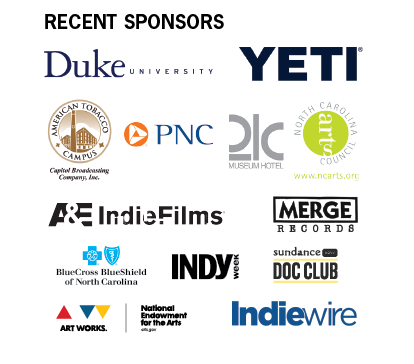Logo placement is boring. It’s one of the most drummed up benefits that sponsorship seekers offer. It typically hits as one of the first benefits off the rack, sitting right there at the top of the proposal – logo placement.
So many Sponsorship Seekers seem to sell this as one of their top benefits and it’s incredibly boring. It also doesn’t add a lot of value.
Sponsorship needs to be about more than logo placement in order to lock down great deals. I’m going to show you how to do that.
Understanding the Sponsor’s Perspective
Think about it from a potential sponsor’s point of view…
They could spend the sponsorship fee to get their logo on something. Likely, it will be put on a uniform, a pull-up banner, or at the bottom of some cluttered website.
Or, they could pay to put an advertising or marketing campaign on a billboard.
The logo placement through sponsorship provides zero context, zero education on what the brand does, zero demonstration of the products or services the brand offers, gives the brand zero control, and does almost nothing to change consumer’s perceptions and behaviours towards the brand.

Whereas, at least with a billboard, the brand can convey a message, demonstrate or highlight a product/service, they can communicate emotion, they can control the imagery and the message, and they can get data on
the amount of traffic going past it.
If you’re a smart marketer weighing up whether to invest marketing spend on either logo placement with sponsorship vs a billboard, the billboard wins in my opinion. It’s a better investment for greater returns and greater control.
Transitioning from Benefits to Solutions
So how can you stand out from the crowd?
Focus on selling solution vs logo placement, or generic benefits.
You want to pitch, or sell benefits, products, or services which are potentially going to solve or assist the sponsor. Solutions that are going to help your potential sponsor jump at the chance to sponsor you.
The premise of the KICK *SS method of acquiring sponsorship is built around selling creative solutions, rather than offering generic benefits that don’t cut through.
The KICK SS Method for Acquiring Sponsorships
I developed this method after working with globally renowned brand agencies such as Saatchi & Saatchi, and seeing how they pitch. They’re really good at pitching for work. All around the globe, they and other agencies like them are successfully locking in multi-million-dollar jobs with massive companies.
The best part is that it actually works!
In a nutshell, it looks like this:
Step 1 – Research the Brand
Research the brand and attempt to discover at least three (3) needs, challenges, or wants that the brand has.
Step 2 – Align Sponsorship Opportunities with Brand Goals
Identify EXACTLY how the brand could use their sponsorship with you to help solve those needs, challenges, and wants you’ve identified.
Step 3 – Develop Activation Campaigns
Create three (3) activation campaigns or concepts to present to or pitch to the brand.
Step 4 – Focus the Pitch on the Sponsor
Make the core focus of your pitch about them — how you can help them and the problem(s) you’re solving.
Practical Example of Solution-Oriented Sponsorship
Here’s a really simple example of what that might look like in reality:
1. Research:
Brand X might be interested in growing their database for marketing purposes, promoting a new product, and wanting to retain their top clients.
2. Identify:
I think we could use our database to help grow theirs, we think our followers/participants would love their new product, and we’ve got some VIP hosting which would be great for their top clients.
3. Activation ideas/campaigns:
- Pitch a concept that involves emailing out a competition to your database which incentivises people to sign up to the sponsor’s email list. Provide an exclusive perk, discount or access to an exclusive area in exchange for signing up to the sponsor’s email list.
- Develop a concept where their product is provided as prizes at the event, or provided as samples, or as a demonstration. Perhaps try and build it into the event, show, or charity event.
- Pitch an exclusive VIP hosting package and experience to host their top clients. Mix it in with free tickets and exclusive options for any client who signs a big order, or agrees to extend their contract with your sponsor.
4. Focus on them:
When you pitch to them, you can focus your communications on them: “We’ve got some great ideas on how we can help you grow your database, get people to trial your latest product. We’ve also got a great idea on how you can retain your top clients while encouraging them to do more business with you”.
Obviously, this is a very simplified version for the sake of trying to fit it in this post. But this is essentially the gist of the exact
approach we use and work with our clients on, here at Sponsorship Pantry.
This approach has a higher degree of cut through, higher success rate, achieves higher sponsorship amounts and allows people like you to retain your sponsors for longer.
Common Mistakes to Avoid in Sponsorship Pitches
Some of the pitfalls I see sponsorship seekers implementing which tend to derail or undermine this approach, and are ones you’ll want to avoid yourself, are the following:
- Making it all about yourself vs about the sponsor.
Many people make the sponsor read pages and pages of info about their organization before adding any value, rather than talking about how they are going to help the sponsor.
- Confusing philanthropy and sponsorship.
Their main focus is around convincing the sponsor they are a worthwhile cause to sponsor, rather than demonstrating the value they can provide.
- Pitching generic benefits rather than solutions.
The scenario could also be pitched as “access to our database,” “opportunity to activate,” and “hosting opportunities.” These are benefits, but they are not the solution you’re selling, nor the problem you’re solving.
Think about it from your own perspective, and your organization.
Out of the two following statements, which one grabs your attention more?
1. [Insert your name here], would you be interested in sponsoring me and giving me some money?
2. [Insert your name here], I’ve got some great ideas that could help you get more participants, sell more tickets, attract more donations, and attract more volunteers. Would you be interested in learning more?
Which of those are you more interested in learning more about?
Which of those statements motivates you more and makes you more likely to respond?
This is the core difference between a generic approach and an approach that focuses on your potential sponsor and how you’re going to help them.
It’s called “what’s in it for me?” marketing.
Like it or not, many of us think this way.
We often ask ourselves, “How does it benefit us?”
When you leave all of the thinking up to the sponsor, it’s a harder choice.
When you provide solutions, it’s an easier choice.
Even if you’re unsure about changing your approach to the one outlined above, I recommend trialing it at the very least to see how you get on.
It works! Our clients have success with it, and they’re locking down big deals when others aren’t.
And if you’re not locking down as much sponsorship as you’d like, you might not have too much to lose by at least trying it.
If you need a hand on how to identify and sell sponsorship solutions for your organization, book in a call with us.











